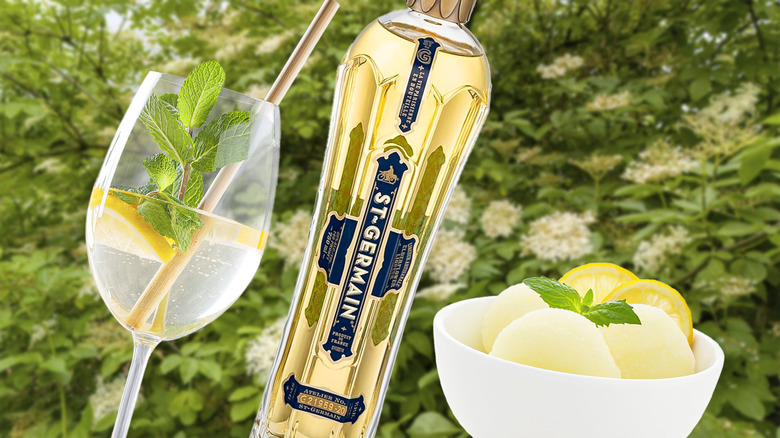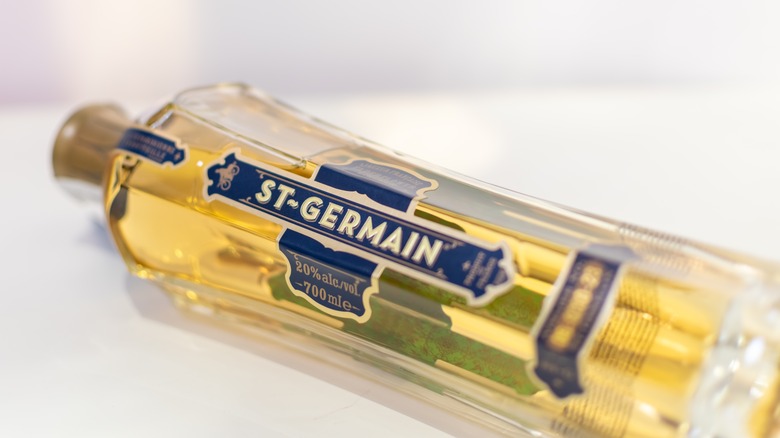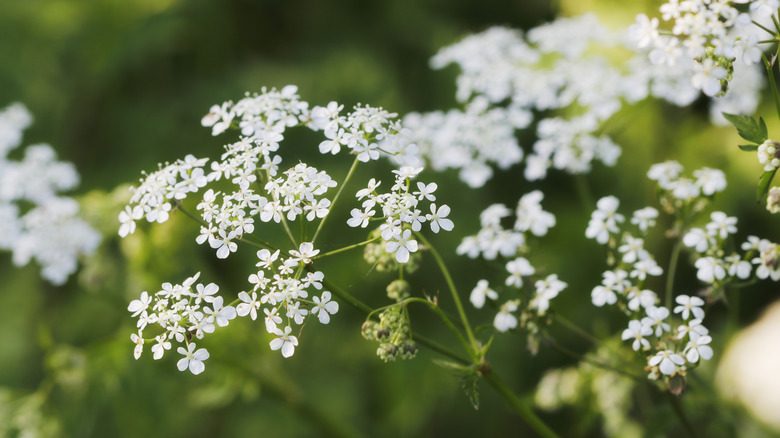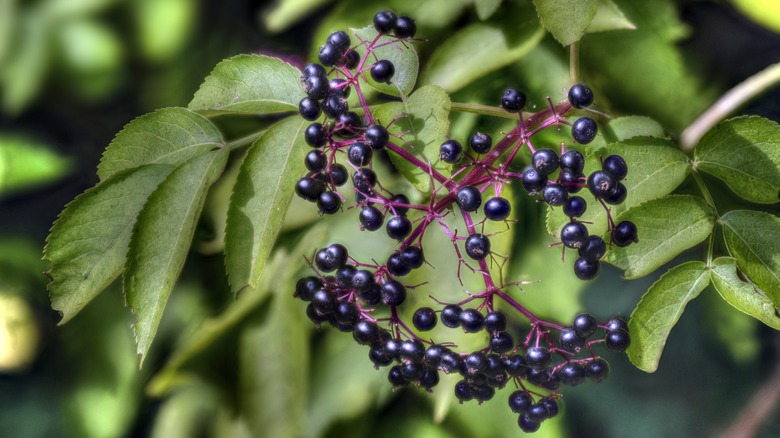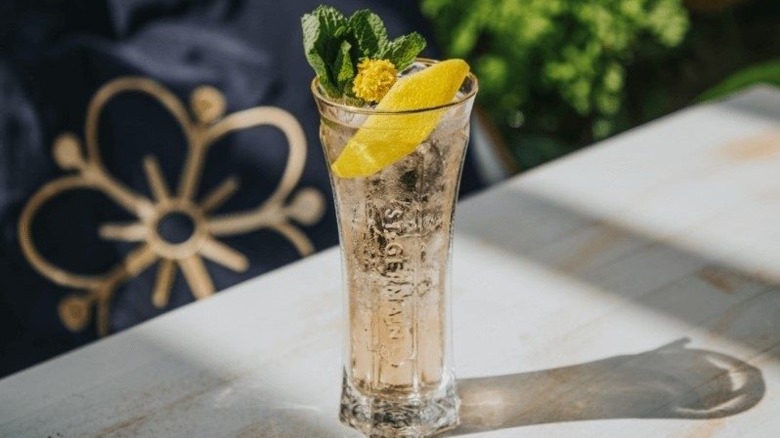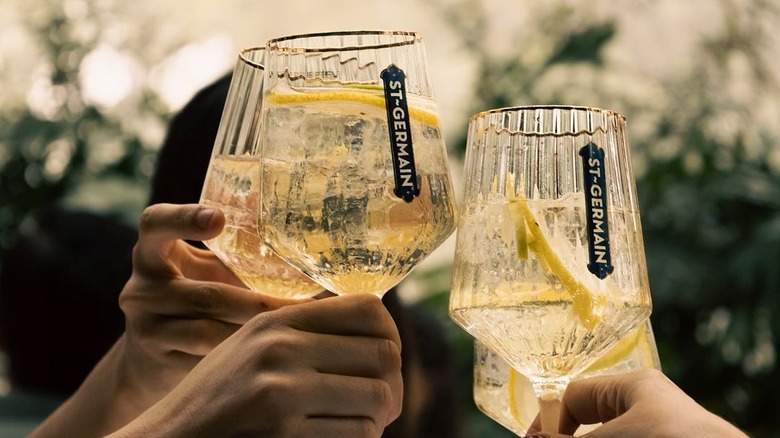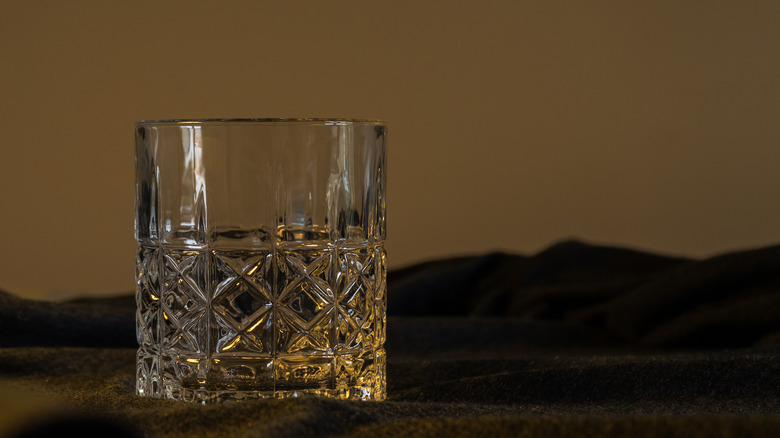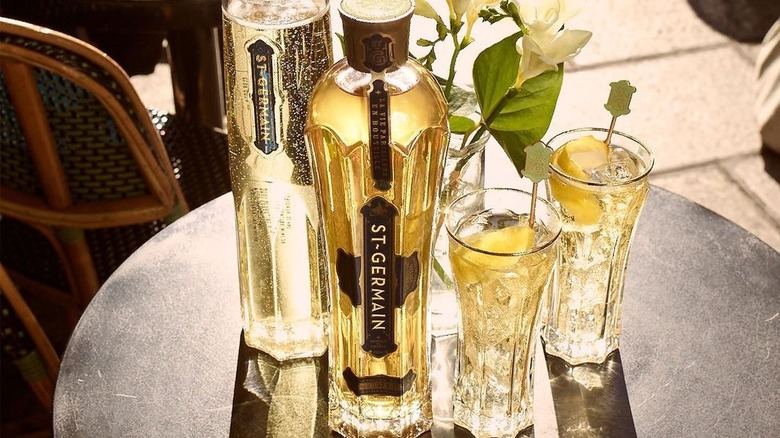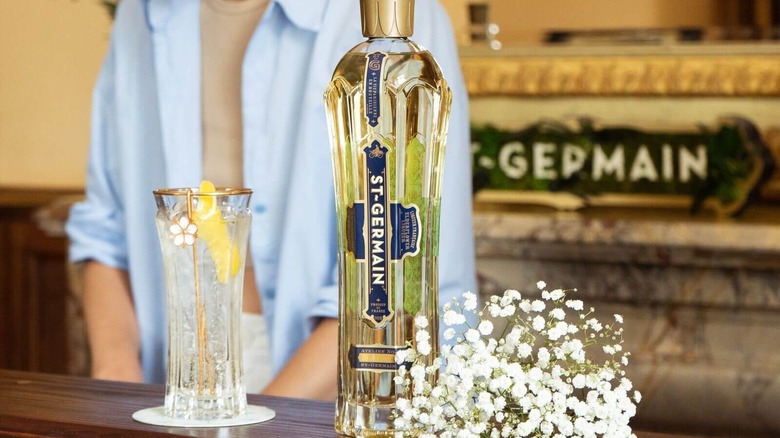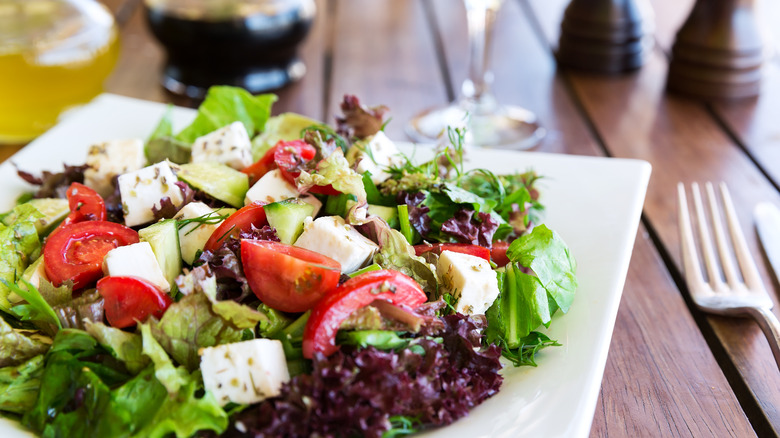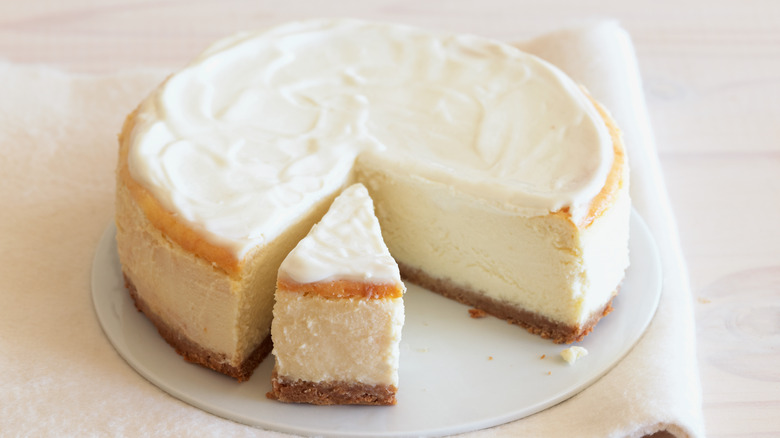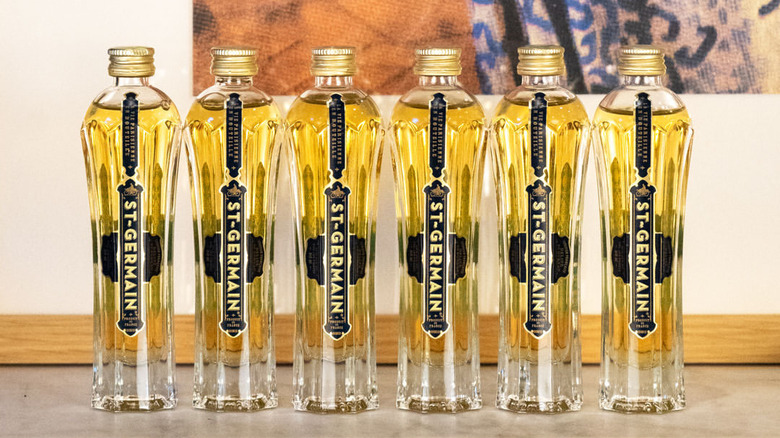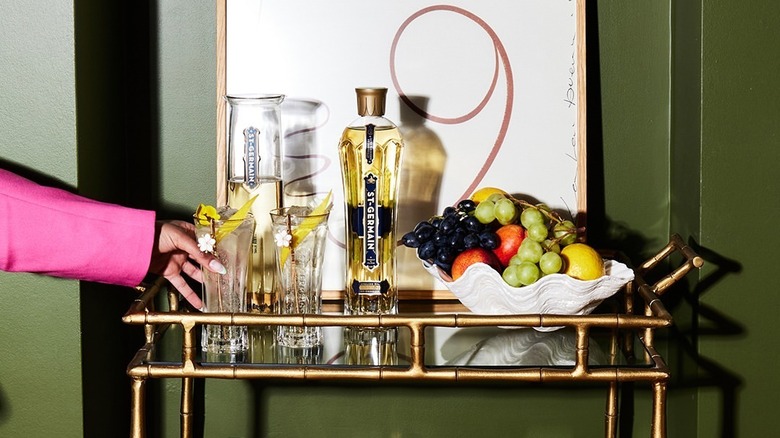What Is St. Germain Liqueur And How Do You Drink It?
Imagine a liqueur that effortlessly blends floral elegance with a touch of sweetness, transforming ordinary cocktails into extraordinary experiences. That's the magic of St-Germain. As the renowned Italian-turned-SoCal mixologist Vincenzo Marianella puts it, "St-Germain is one of the best liqueurs or modifiers that has come out in the last 25 years, a must-have behind the bar." What a glowing endorsement.
Lauded by mixologists and cocktail enthusiasts alike, this elderflower liqueur has become a staple in bars and kitchens across the globe — but what exactly is St-Germain, and why has it captured so much attention? From its enchanting floral notes to its surprising versatility, this liqueur seems to have a bit of everything. On top of that, its iconic, art-deco-inspired bottle hints at sophistication within. What's more, its culinary uses are slowly gaining popularity, as chefs experiment with St-Germain to add an unexpected and delicious twist to both savory dishes and desserts.
Here, we'll uncover what makes St-Germain unique, how it's crafted, and why it continues to be a favorite among those who appreciate a refined touch in their drinks. Whether you're a veteran mixologist or a curious home bartender, understanding St-Germain's nuances will enhance your appreciation of this sophisticated spirit. Curious to learn more? Let's explore what makes this liqueur such a standout in the world of spirits.
What is St-Germain?
St-Germain is a French elderflower liqueur celebrated for its distinctive and delicate flavor profile. Derived from the blossoms of the European elderberry plant, it hails from the region of Savoie in southeastern France. Nestled between the Alps and known for its lush landscapes, Savoie is celebrated for its traditional craftsmanship and high-quality ingredients, including the fragrant elderflowers that flourish there. These light, floral blossoms belong to the Sambucus family, which also includes elderberries.
With an alcohol content of 20% ABV (40 proof), St-Germain offers a refined addition to all kinds of cocktails. The liqueur is often praised for its versatility and is a popular choice among bartenders for its ability to enhance drinks with many different flavor profiles. Its golden hue and aromatic sweetness make it a standout innovator in the cocktail scene.
The name "St-Germain" is a nod to the historic St-Germain-des-Prés district in Paris, a cultural hub during the Belle Époque, known for its vibrant community of artists and writers. The bottle's elegant design pays homage to the Art Deco movement of the same era, adding to its allure. First introduced in 2007 by Robert Cooper, the brand's founder, St-Germain quickly gained recognition for its delicious flavor and artisanal production process. The use of hand-picked elderflowers ensures a freshness and complexity that have helped it become a beloved ingredient in bars and homes around the world.
How is St-Germain made?
The production of St-Germain is a meticulous and artisanal process that begins with the careful harvesting of elderflowers. Every year, these blossoms are picked by hand during their peak bloom in late spring. They're typically picked in the cooler temperatures of the morning when the flowers are only just opening — this is when they're at their best. Each bottle uses up to 1,000 delicate blossoms, creating the elegant and aromatic profile so many of us know and love.
The flowers, still fresh, are then transported to the distillery, where St-Germain's master liqueurist works their magic, slowly infusing the elderflowers with alcohol. Timing is critical in this process, as the flowers must be used quickly to preserve their delicate scent and flavor. No preservatives or artificial ingredients are added, ensuring that the natural essence of the elderflowers shines through. St-Germain's dedication to traditional techniques is a key factor in its unparalleled quality. Notably, it gets its beautiful, pale hue from the natural pollen of the elderflowers, adding to the liqueur's artisanal charm and visual appeal.
From start to finish, it's a labor-intensive process that requires keen attention to detail, ensuring that every bottle of St-Germain retains the unique qualities of its floral origin. This commitment to craftsmanship is what sets St-Germain apart from other liqueurs and has helped it become a long-time favorite in the ever-evolving global cocktail scene.
Elderberry vs. elderflower, what's the difference?
Elderflowers and elderberries both come from the same plant, but offer distinctly different flavors and uses. Elderflowers are the small white blossoms that appear on the elderberry plant, known for their delicate, floral aroma. Their light, fragrant qualities make them ideal for adding a subtle sweetness and complexity to a spirit like St-Germain.
In contrast, elderberries are the dark purple or black fruits that develop after the elderflowers have bloomed. It's important to be careful with them, as these berries are tart and poisonous if eaten raw. However, when they are cooked, they're great to use in seasonal pies, syrups, jams, and even medicinal preparations. Thanks to their abundance of nutrients, including lots of antioxidants, vitamin C, and fiber, elderberries have been used in traditional medicine for centuries to boost the immune system and treat colds and flu. They're still popular today, often found in health supplements and wellness products aimed at enhancing immunity and overall health.
The bold, robust flavor of elderberries contrasts sharply with the delicate notes of the elderflowers. While elderflowers impart a sweet, floral character, elderberries offer a more intense, tangy taste. This distinction makes each component suitable for different culinary and beverage applications — from liqueurs to herbal remedies.
What does St-Germain taste like?
St-Germain is renowned for its distinct floral and subtly fruity flavor profile. The liqueur presents a delicate blend of notes, including pear, honeysuckle, lychee, and grapefruit zest. The initial sip reveals a light, floral sweetness that gradually gives way to a more complex bouquet of flavors. This floral element is the most potent part of its flavor profile. The pear adds a subtle fruitiness, while the honeysuckle imparts a sweeter and more fragrant note.
The lychee contributes just a hint of the exotic, and the grapefruit zest adds a touch of citrus brightness. This combination creates a harmonious interplay of flavors, with each component enhancing the others without overpowering. As the liqueur lingers on the palate, its smooth texture and nuanced flavors offer a sophisticated drinking experience. According to Tess Anne Sawyer, a St-Germain brand ambassador, "You can make any cocktail delicious with the addition of St-Germain. It truly is an incredibly diverse flavor profile that mixes well with any spirit." Its ability to balance floral and fruity elements is precisely what makes it a favorite for those who appreciate a nuanced and well-rounded beverage.
St-Germain cocktails
St-Germain's remarkable versatility has earned it a beloved spot in many bartenders' arsenals. Often referred to as "bartender's ketchup" for its universal compatibility, this comparison, though widely used, does not really capture its premium quality, according to mixologist Vincenzo Marianella. Despite the term's disparaging connotation, St-Germain's adaptability shines through in a variety of cocktails. "It blends and tastes great with almost any basic spirits — tequila, vodka, gin, you name it," notes Marianella. One popular example is the Hugo Spritz, a refreshing mix of St-Germain, prosecco, club soda, mint leaves, and a lime wedge. Ben Goodwin, the Irish mixologist known as The Rusty Bartender, highlights its transformative effect: "It has the ability to change a drink just by adding a little."
For those seeking something a bit different, Tess Anne Sawyer, suggests trying the Bohemian cocktail — a blend of St-Germain, gin, pink grapefruit juice, and Peychaud's bitters. She also recommends the Cooper Union, a whiskey and elderflower twist on the classic Sazerac. Sawyer even invented the Goldbloom to experiment with St-Germain as more than a modifier. It's a drink inspired by a caipirinha, using a generous pour of St-Germain combined with gin, vermouth, and muddled lime chunks to balance the sweetness and bring out the liqueur's tropical fruit notes. These creative concoctions exemplify how St-Germain can elevate just about any style of cocktail with its elegant floral notes, making it a standout ingredient for any mixologist's repertoire.
Drinking St-Germain straight
St-Germain's floral sweetness makes it a standout in cocktails, but sipping it straight may not suit everyone. Vincenzo Marianella suggests that "on the rocks would work better than neat," as the addition of ice would help mellow the liqueur's sweetness and allow its flavors to unfold a bit more gradually. Tess Anne Sawyer, a St-Germain brand ambassador, echoes this advice: "There are people who enjoy liqueurs on their own. I would rather have the addition of sparkling water or sparkling wine to elongate the beautiful flavors of St-Germain."
Ben Goodwin also agrees, noting, "To be honest, St-Germain is not something I've ever thought about drinking on its own." Instead, he prefers mixing it with club soda for a more balanced, refreshing sip. The general consensus seems to be that while St-Germain truly excels as a cocktail ingredient, these tips can enhance the experience of drinking it straight for those curious to explore its flavors on their own.
St-Germain's popularity
Since its introduction to the world in 2007, St-Germain has gradually risen in popularity. It was really the Hugo Spritz, a refreshing cocktail featuring St-Germain, prosecco, club soda, and mint and lemon to garnish, that brought St-Germain the attention it was waiting for. Marianella observes, "It's definitely more popular now than it was before. There was a moment where tough bartenders were too cool to use it," simply because it was so trendy. All that is in the past. St Germain has established now itself as a must-have ingredient behind pretty much every bar.
Ben Goodwin notes that St-Germain's presence extends beyond high-end bars to casual venues, thanks in part to the popularity of spritz-style drinks. Tess Anne Sawyer adds that its versatility has cemented its place in the craft cocktail scene. "St-Germain was created for bartenders, to give them a new flavor to explore and create with," she says. Its ability to enhance various cocktails has made it a staple in both upscale and everyday drinking establishments.
St-Germain's lower ABV also lends itself to modern tastes, particularly the growing demand for lighter, low-alcohol cocktails like spritzes. This trend is part of a broader shift in drinking culture, where people are increasingly seeking out drinks that are refreshing, easy to sip, and less likely to result in overconsumption. St-Germain's floral notes pair perfectly with sparkling water, making it ideal for casual, daytime cocktails that prioritize flavor without the intensity of stronger spirits.
St-Germain vs other elderflower liqueurs
When compared to other elderflower liqueurs, St Germain stands out for its balance and quality. Vincenzo Marianella comments, "I've tasted a few elderflower liqueurs over the years, and I haven't found one as balanced as St Germain. There was a drier one, but it was not floral enough. And then there were a lot of them that were sweeter than St Germain." Unlike some competitors that may be overly syrupy, St-Germain achieves a harmonious blend of floral and fruity notes.
Ben Goodwin agrees, stating, "Compared to other elderflower liqueurs, St Germain is elite." He highlights that many alternatives have either an artificial taste or excessive sweetness. Tess Anne Sawyer emphasizes that St Germain uses fresh elderflowers, a key factor in its superior flavor. "St-Germain is the elderflower liqueur made with fresh elderflowers. The elderflowers are picked fresh and infused the same day," she explains. "Other elderflower liqueurs are either using dried elderflowers or elderflower essences, both of which taste extremely different from the original elderflower flavor St-Germain is able to capture. Some also use the addition of other flavors, making it not a true elderflower liqueur." What all this boils down to is clear: if you're craving an elderflower liqueur, St-Germain is the clear winner.
Pairing St-Germain with food
St Germain's floral notes and sweetness make it a great match for light, fresh dishes. Marianella suggests pairing it with "something light and not that fatty, like fish." Other pairing routes you might take include salads and citrus-flavored dishes. The idea is to complement the sweetness of St-Germain with dishes that have bright, clean flavors.
Tess Anne Sawyer offers a few noteworthy pairing ideas as well, such as "a St-Germain Olivette martini with caviar," which includes dry vermouth, gin, and an olive. Complementing the liqueur's fragrant profile with the salty richness of caviar creates a luxurious balance. Another suggestion Sawyer has for St-Germain pairings is with "a nice vanilla-forward dessert." This will amplify the dessert's sweetness while maintaining complexity in the cocktail, making for a harmonious and layered experience. All in all, St-Germain's versatility allows it to shine not only in cocktails but also alongside a variety of culinary treats.
Cooking with St-Germain
St-Germain isn't just for cocktails — it can be a creative ingredient that adds a fun flair to your cooking. "St-Germain's lovely fruit notes lend themselves well to other fruit flavors," explains Tess Anne Sawyer. "You could use it in a salad dressing for its sweet honeysuckle notes, in a glaze for proteins, such as duck, to enhance the stone fruit flavors. You could even pour some over vanilla ice cream." On top of those ideas, St-Germain would add a lovely complexity to fruit compotes or jams, particularly when paired with berries or stone fruits.
Sticking to Sawyer's advice, St-Germain's fruitiness can also work well to elevate a wide range of desserts. For example, you might incorporate it into a lemon glaze or frosting to top a cake, infuse it in a fresh lemon sorbet, or swirl it in a cheesecake batter for a refreshing, aromatic twist. St-Germain's versatility and distinctive flavor profile allow it to bring a surprisingly delicious and elegant element to a wide range of culinary creations, savory or sweet.
Where to buy St-Germain
St-Germain is widely accessible and can be found at most well-stocked liquor stores and select grocery stores, including popular chains like Trader Joe's, Walmart, and Total Wine. You'll typically find it near the other specialty spirits in the liqueur section. If you prefer the convenience of online shopping, you can order it directly from St-Germain's official website or through other reputable retailers such as Curiada or ReserveBar, often with options for same-day delivery or even scheduled shipping.
St-Germain's growing popularity means it's easier than ever to find, whether you're stocking up for a special occasion or experimenting with new cocktail recipes at home. Some retailers even offer gift sets or limited-edition bottles, so it's worth browsing around for unique finds. Thanks to its wide availability, this premium elderflower liqueur can easily be a staple in your home bar, no matter where you prefer to shop.
How to store St-Germain
To preserve the exquisite flavor and quality of St-Germain, proper storage is essential. Even though you might want to show it off, displaying it on your liquor cart is not the best idea. Keep the bottle in a cool, dark place, away from direct sunlight and heat sources. This helps prevent the liqueur from degrading, as exposure to light and warmth can alter its delicate floral notes and sweetness over time. Unlike spirits with higher alcohol content, which are more stable, St-Germain's lower proof and delicate composition make it more susceptible to temperature and light changes.
Ideally, store it in a cabinet or pantry at a stable room temperature. Once opened, St-Germain recommends you finish a bottle within 6 months to ensure you experience its best taste. After that, while it doesn't spoil, it may change in color and flavor a bit. This is similar to other liqueurs with a lower alcohol content, which also benefit from being kept in controlled conditions to maintain their integrity. Proper storage not only extends the shelf life but also ensures that each pour retains the liqueur's intended floral flavor profile.
